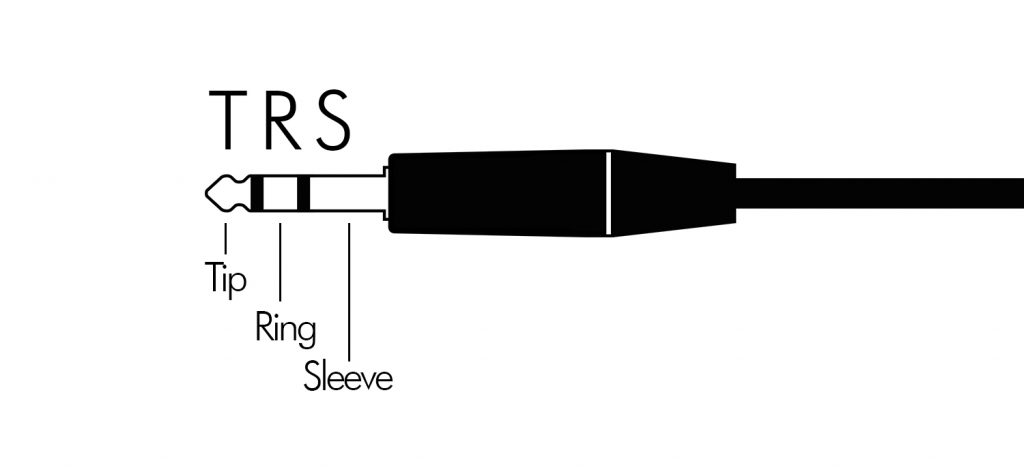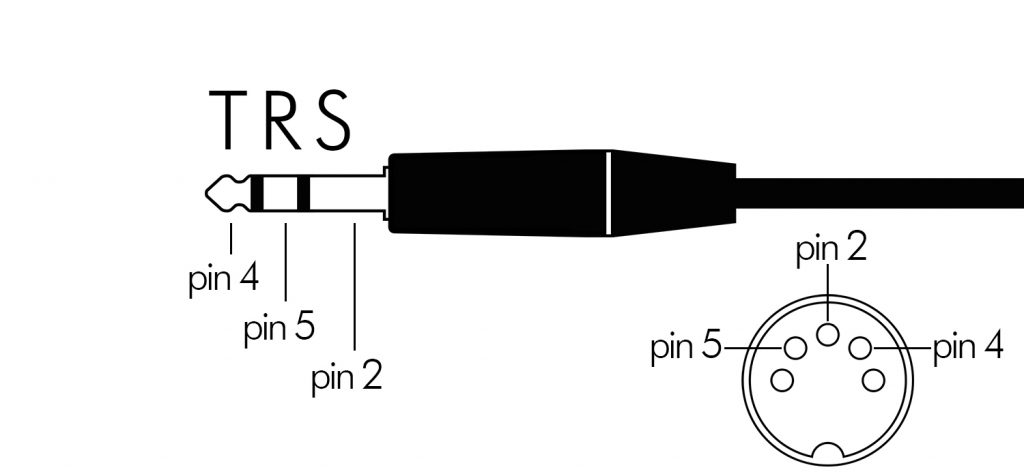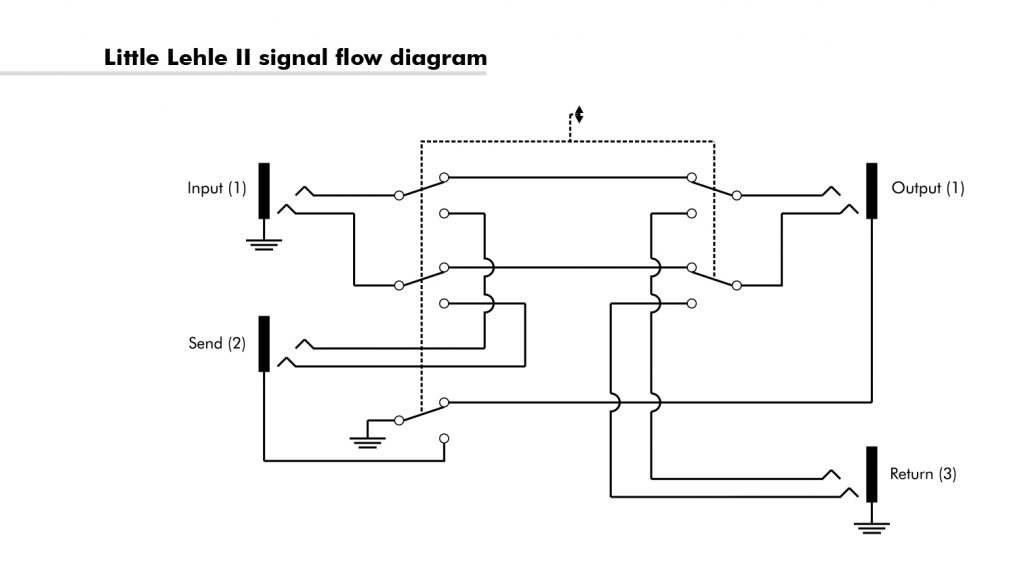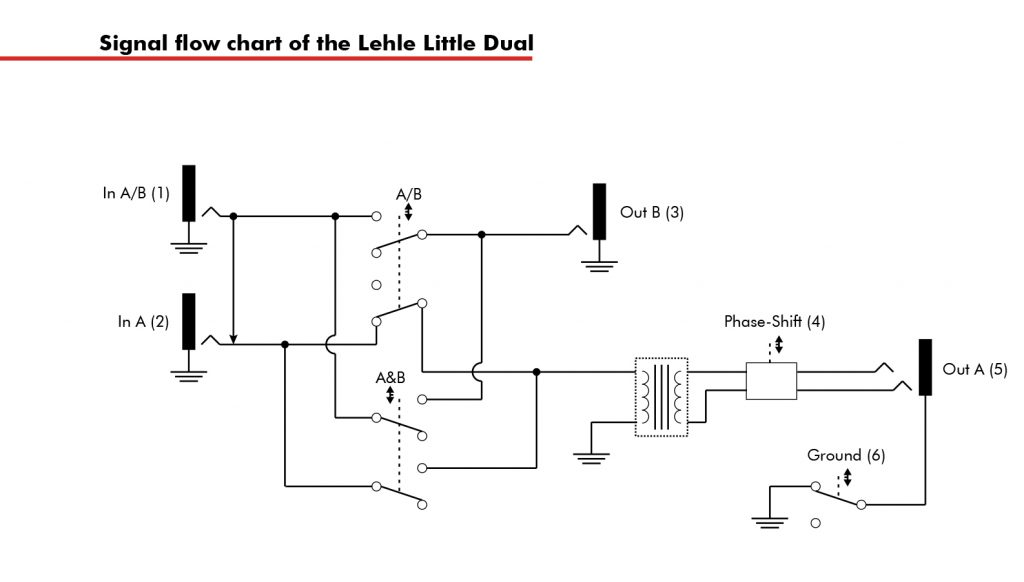
“I am TRS confused!”
There’s a lot of confusion about those TRS contrary to TS connectors.
Some use them as a connection for stereo signals, some for balanced signals. Even midi is possible – we at LEHLE do this since 2007. There are way more applications; stereo or balanced is very common though.
But soldering a “stereo jack“ to a “microphone cable“ is simply wrong.
Why?
Let’s make it easy:
“3 points!“
A TRS connector has three soldering points: the tip (T), the ring (R) and the sleeve (S).

A stereo signal usually is made of a left and a right signal. To transfer it safely through a cable we additionally need a shield (ground), so we take a connector which has 3 soldering points. A TRS jack connector is perfect. The left is connected to the Tip, the right to the Ring and the shield/ground to the Sleeve:

“I am in absolute balance with myself!“
A balanced signal is different although it can use the same jack. It’s made out of a positive signal, a negative signal and a ground/shield. Usually you take XLR connections for it. Yes – that kind of cable you always take the wrong side first, if you want to plug it into the microphone. We’ve all been there.
But if you transfer a balanced signal through a TRS jack, it’s still mono. Not stereo. Crazy, huh?
You heard about balanced signals, but don’t know what it is? I think you have used a DI-box, or? These boxes create a balanced signal out of an unbalanced, so it is safe to send it through long cables.

“My midi signal is distorting!”
As a guitar or bass player you were always laughing about your keyboard player’s “castle of synths“, but midi is very useful to sync all your midi-enabled gear. E.g. our SGoS series is midi-enabled.
Very common for midi connections is the 5-pin DIN connector. But what if I tell you, midi needs only 3 pins? It has a shield and 2 lines which differ in voltage (5 V and 0 V) and therefore is a binary control signal (ones and zeroes). You can do a lot of cool things with midi, like recalling presets or change values in your gear. If your keyboarder won’t stop playing the solo of Van Halen’s “Jump“, just send midi control change CC#120 and he will (Earworm in 3…2…1…).
Another secret I share with you: midi doesn’t transfer any audio signal. Really? No. You won’t need a buffer or overdrive for your midi signal.
But back to TRS: it’s possible to send a midi signal via a TRS jack. As mentioned, we are doing this since years, because it’s space saving and in our opinion a TRS jack is more reliable than the typical 5-pin DIN jack.

“So digital!“
To integrate our pedals into your existing midi enabled gear you can simply use our LEHLE MIDI CABLE or if you have more than one LEHLE SGoS pedal, you need to use the LEHLE MIDI JUNCTION.
This little box connects the 5-pin DIN up to 4 TRS jacks for our SGoS series. But: although it has a 5-pin DIN connector and 4 jacks it’s not suitable for switching amp channels or any other kind of analogue switching. Midi is a digital message and therefore an amp (usually) doesn’t understand ones and zeroes.
“TRS and coffee machines…“
But back to stereo and balanced. There are pedals or devices in general (except coffee machines) which have TRS jacks. Are they balanced? Are they stereo?
A good example is the LITTLE LEHLE II.
The LITTLE LEHLE II has an entire TRS path and no active electronics. Meaning you can use it in mono with usual TS jacks or in stereo with TRS jacks. And you get it: you can use it in balanced as well.

If you mix a TRS stereo signal with a mono TS connection, you will lose the right side of the stereo signal, since the Ring and Sleeve are connected. If the ground is connected with an audio signal it’s a short circuit and the signal will be muted.
“Pedal feelings!“
The LITTLE DUAL is more advanced:

They say you can use it in stereo. And it has TRS jacks. So are the jacks in stereo finally? Unfortunately not.
Output A of the LITTLE DUAL is an isolated output (galvanically isolated by our LTHZ transformer) and the signal coming out of the LTHZ can be tapped in balanced. So you need a TRS jack to get a balanced signal out of A.
So what about the stereo function? There are 2 input jacks called A/B and A.
If you have a simple mono signal coming out of your guitar or overdrive and you want to spread it to two amps, you simply plug it in into A/B. POW! Signal can be sent out to A and B. If you have a stereo signal, plug the left into input jack A and the right into input jack A/B. Since the A input is occupied now, the pedals realises (yes – pedals have feelings too), that a second signal is connected. So the incoming left signal is sent to output A and the incoming right signal to output B. Still isolated by the transformer. Why? Maybe you want to know everything about hum, so read the blog entry AB ABC ABY.
Simply put, there are 3 reasons to use TRS jacks:
1.) it has a stereo or balanced signal or it’s a midi jack, so it needs the TRS
2.) the jacks have some kind of switching function (uuuuh… pedal feelings)
3.) It’s that simple: they are more reliable and since they have more soldering points on the pcb, they are able to bear more load.
“Specifications are a secret weapon!“
In general I recommend to read the specifications passage in the manual of your pedals. Often there’s a section called “Inputs/Outputs“ or “Connections“, where is written: “1/4“ balanced“ or “TRS stereo“ or anything similar to that.
Especially for our pedals it’s good to know what you really can do with them. Splitting, balancing, stereo applications, etc…
E.g. you won’t need an additional DI-box for balancing your signal, if you’re coming out of a P-SPLIT II or LITTLE DUAL isolated out.
If you’re not sure about the ins and outs just send me a mail to support@lehle.com
“Expression!“
There are way more possible applications for TRS jacks: maybe your amp’s foot switch pedal has TRS jacks for selecting between the clean or overdrive channel and a second switch for the reverb or fx-loop? And you maybe have an expression pedal, which also needs a TRS cable.
The TRS of your foot switch simply opens or closes a connection and as a reaction the amp switches the channels. Your expression pedal changes a resistance via an internal pot, your controlled pedal reacts to this new value and does a faster chorus rate or a different mix amount at your delay.
All in all it’s good to know what a) my pedal can do and b) how the jacks are used if they are TRS. Sometimes there are little treasures hidden.
Right know it would be good to know if the TRS at my coffee machine is stereo, balanced or midi, so I could remote control it. Where is the manual?!?
Split your coffee! It works. Really.(And the transformer doesn't color the flavour…)
Posted by Lehle on Montag, 4. Juli 2016


One thought on “TRS: Balanced or Stereo or what?”
Comments are closed.